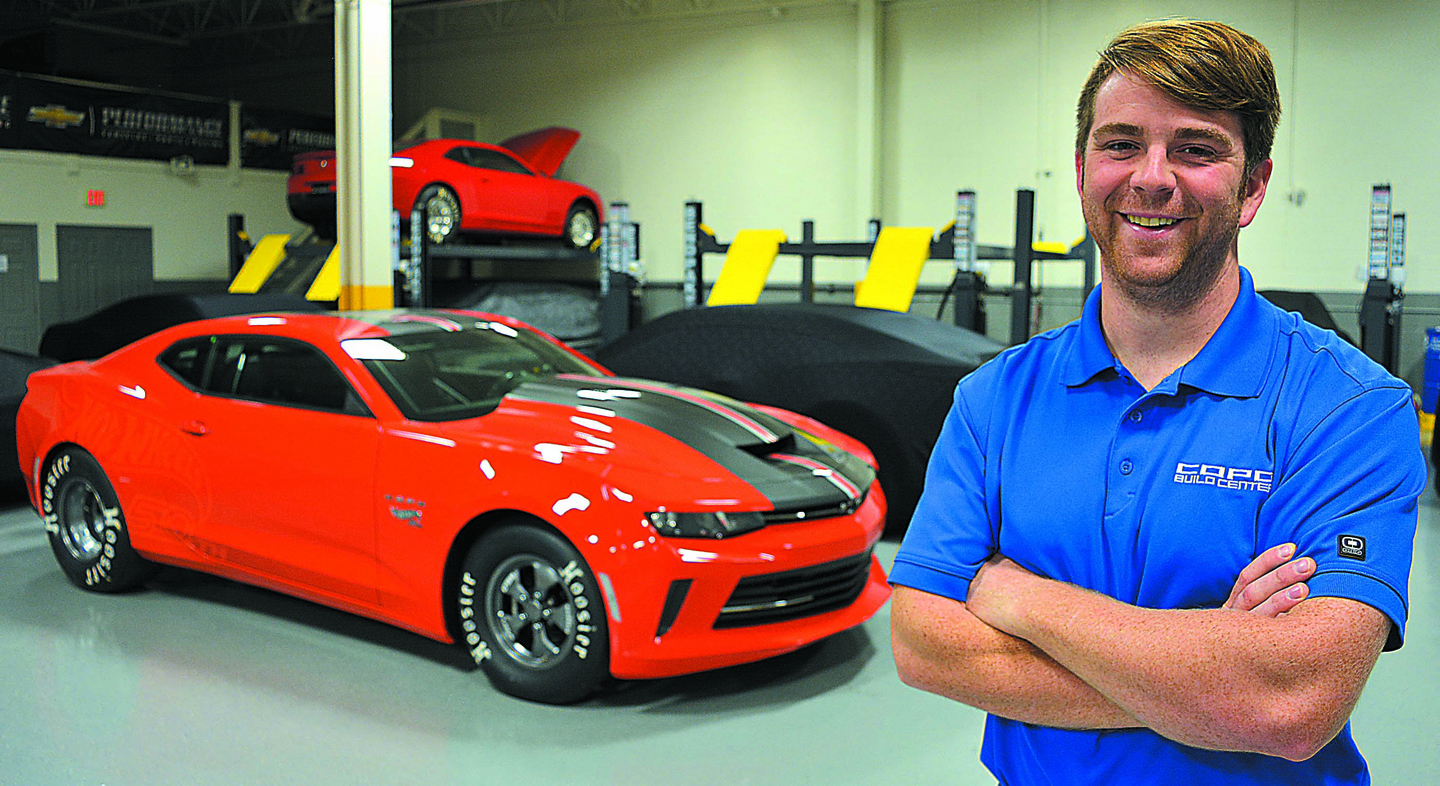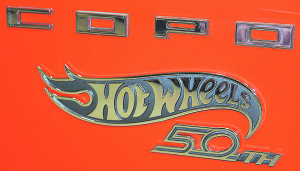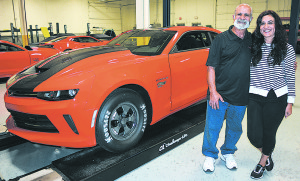
OXFORD TWP. – Tucked away among a group of nondescript buildings just east of M-24 is a place where limited numbers of high-performance race cars are assembled for folks across the country who are lucky enough to win the right to purchase one.
“It’s a dream come true. I always wanted one,” said Cliff Mickool, who drove all the way from Los Angeles, California to pick up his vehicle on Oct. 5. “I can’t wait to get her home.”
Located along Adventure Lane is the COPO Build Center. This is where COPO Camaros are born.
These factory-built cars are meticulously engineered and crafted to do one thing and one thing only – dominate the competition at drag strips with raw power.
The COPO Camaro is quite different from its everyday cousin that goes from the assembly line to the dealership to the open road.
“It doesn’t share much of anything with a production vehicle outside of the body,” said Mike Lawrence, operations/engineering manager of the COPO Build Center.
The COPO Camaro’s rear suspension, brake and fuel systems, engine and transmission are all unique.
“Everything’s been designed around the idea of drag racing,” said Lawrence, a 2007 graduate of Oxford High School.
The COPO Camaro has a roll cage, lacks a back seat and does not come with a vehicle identification number, so it cannot be registered.
“It’s not a street-legal vehicle,” Lawrence said.
As a nod to the car’s heritage, only 69 COPO Camaros are made annually.
Today’s vehicles are descended from the COPO 9560 ZL1 Camaro, built in 1969 specifically for drag racing. Sixty-nine of these muscle cars – each with an aluminum block 427 engine – were made that year to go head-to-head on the strip with General Motors’ rivals, Chrysler and Ford.
COPO stands for Central Office Production Order. It was a special-order system used by Chevrolet dealers in the 1960s to build high-performance models that weren’t normally available.
The COPO system gave these dealers a loophole that allowed them to circumvent the limitations GM had placed on the Camaro, such as the mandate that engine size could not exceed 400 cubic inches in a passenger vehicle, according to the GM Parts Center.
After 1969, no more COPO Camaros were built until 2012 when the model was resurrected.

Since then, all of them have been brought to life at the Oxford center, which is just under 50,000 square feet and employs approximately 25 people.
It takes about 15 work days to assemble each car, according to Lawrence, who has worked at the COPO Build Center since it opened.
The COPO Camaro body comes from GM’s Lansing Grand River Assembly facility, while the engines and transmissions are made at the GM Global Propulsion Systems facility in Pontiac.
Three types of engines were available for the 2018 COPO Camaro – 302 Naturally Aspirated (360 horsepower), 427 Naturally Aspirated (470 horsepower) and 350 Supercharged (580 horsepower). Like an artist signing a painting, each engine bears the name of the individual who built it by hand.
According to Curt Collins, manager of Chevrolet Performance and COPO Camaro, the fastest of these cars can drive a quarter of a mile, from a dead stop, in 8.6 to 8.7 seconds at nearly 160 miles per hour.
“It’s definitely a rush of adrenaline,” Lawrence said.
Lawrence estimated about 25 to 30 percent of the people who purchase COPO Camaros use them for racing. They’re built to go right from the factory floor to the drag strip.
“You can pick up your car on Friday, race (it) on Saturday and be very competitive,” Lawrence said.
Most of the folks who buy COPO Camaros are collectors. For one gentleman, purchasing this year’s model represented his 24th Camaro.
“He’s just a Camaro fanatic,” Lawrence said. “He’s very passionate about (them).”
Mickool is in the collector category.
“This will be my ninth car,” he said.
Seeing it for the first time was almost a religious experience for Mickool.
“When Curt pulled the cover off the car . . . . the hair on my arms stood up,” he said. “It’s absolutely gorgeous. The fit and finish on this car is second to none.”
That’s not the opinion of some novice.
Mickool is a lifelong car guy.
For 16 years, he owned and operated a service station/garage with his father, and for the last 10 years, he’s worked for Barrett-Jackson, an auction company based in Scottsdale, Arizona that specializes in collector cars.
Mickool has been trying to add a COPO Camaro to his collection for seven years now.
It takes more than money to own this unique car. It also takes lots and lots of luck.
“There’s a lottery system to purchase one,” Lawrence said. “You can’t just write a check.”

Every year, thousands of people have put their names into the proverbial hat to win the right to buy one.
Previous COPO Camaro models have been introduced in the fall at the Specialty Equipment Market Association (SEMA) Show in Las Vegas. The unveiling was typically followed by a 30-day window to enter the drawing.
“This year, we had over 16,000 entries (from across the United States),” Collins said.
Collins noted GM, at this point, has not confirmed if there will be a 2019 model.
The starting price for the 2018 COPO Camaro was $109,000 with the 427 Naturally Aspirated engine. Depending on the options selected, a buyer can spend close to $200,000, according to Collins.
Mickool took full advantage of his golden ticket. He went all-out by purchasing not only the car, but all three engines, plus the $18,975 Hot Wheels option, which celebrates the 50th anniversary of the toy cars made by Mattel.
Only 29 of this year’s 69 COPO Camaros feature Hot Wheels graphics and badges on the car, inside and out.
When all was said and done, Mickool’s Camaro cost $198,575, according to Collins.
Even Mickool’s wife of 42 years, Maureen, was impressed by his new ride.
“That’s one of the prettiest cars I’ve ever seen,” she said. “I was shocked at how cool this was. I’m not a car person, but I love this. It’s a sexy car.”
Maureen had absolutely no idea her husband had been entering the COPO Camaro drawing for the last seven years. The first she heard about it was when he told her he won and wanted to buy it.
“How do you say ‘no’ to that? You can’t say ‘no’ to that,” she said.
Mickool said he’s grateful to have a wife who’s “very, very understanding” when it comes to his passion for big toys.
He then announced, “I’m going to try and get another one.”
For Lawrence, seeing “the satisfaction and the excitement of someone picking up their new vehicle” is one of the best parts of his job.
“You get to feel and share the passion that they have for the car,” he said.
When the employees at the COPO Build Center aren’t busy cranking out Camaros, they’re building other things for GM, such as show cars and pace cars.
“There are a lot of craftsmen and talented people working here,” Collins said.

Leave a Reply